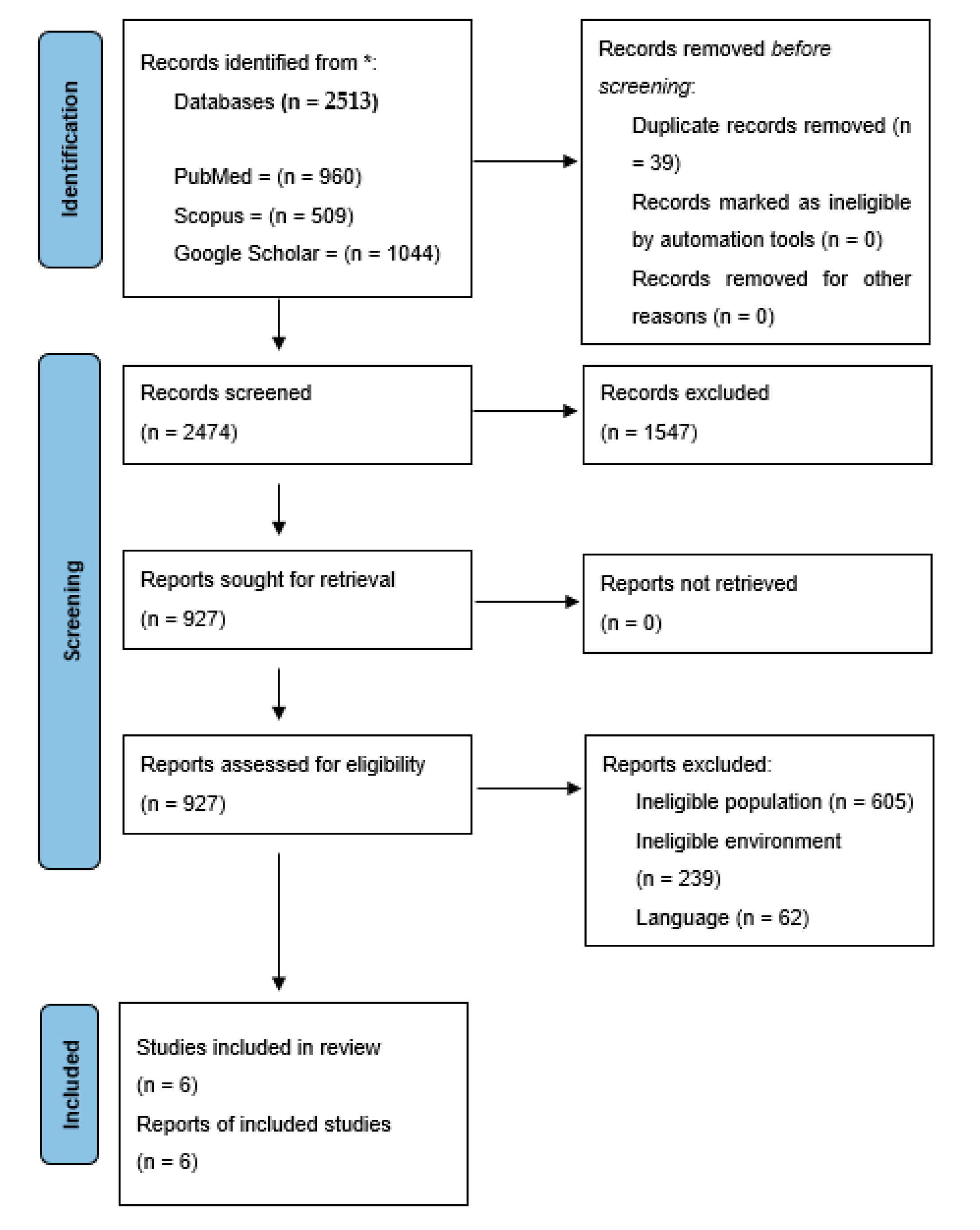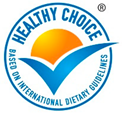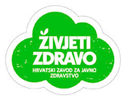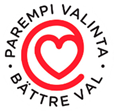Categorizing Foods by Relative Healthfulness: A Scoping Review of Front of Pack Labelling
Abstract
:1. Introduction
2. Materials and Methods
3. Results
4. Discussion
5. Limitations and Future Directions of the Study
6. Conclusions
Author Contributions
Funding
Institutional Review Board Statement
Informed Consent Statement
Data Availability Statement
Acknowledgments
Conflicts of Interest
References
- Islam, S.M.S.; Purnat, T.D.; Phuong, N.T.A.; Mwingira, U.; Schacht, K.; Fröschl, G. Non-Communicable Diseases (NCDs) in developing countries: A symposium report. Glob. Health 2014, 10, 81. [Google Scholar] [CrossRef] [Green Version]
- World Health Organization. Noncommunicable Diseases. 2021. Available online: https://www.who.int/news-room/fact-sheets/detail/noncommunicable-diseases (accessed on 21 October 2021).
- Stuckler, D.; McKee, M.; Ebrahim, S.; Basu, S. Manufacturing Epidemics: The Role of Global Producers in Increased Consumption of Unhealthy Commodities Including Processed Foods, Alcohol, and Tobacco. PLoS Med. 2012, 9, e1001235. [Google Scholar] [CrossRef] [PubMed] [Green Version]
- Spires, M.; Delobelle, P.; Sanders, D.; Puoane, T.; Hoelzel, P.; Swart, R. Diet-related non-communicable diseases in South Africa: Determinants and policy responses. S. Afr. Health Rev. 2016, 2016, 35–42. [Google Scholar]
- Branca, F.; Lartey, A.; Oenema, S.; Aguayo, V.; Stordalen, G.A.; Richardson, R.; Arvelo, M.; Afshin, A. Transforming the food system to fight non-communicable diseases. BMJ 2019, 364, 1296. [Google Scholar] [CrossRef] [PubMed] [Green Version]
- Harvard T.H CHAN. Processed Foods and Health. 2020. Available online: https://www.hsph.harvard.edu/nutritionsource/processed-foods/ (accessed on 21 October 2021).
- Puoane, T.R.; Tsolekile, L.P.; Caldbick, S.; Igumbor, E.U.; Meghnath, K.; Sanders, D. Chronic Non-communicable Diseases in South Africa: Progress and challenges. S. Afr. Health Rev. 2012, 1, 115–126. [Google Scholar]
- Igumbor, E.U.; Sanders, D.; Puoane, T.R.; Tsolekile, L.; Schwarz, C.; Purdy, C.; Swart, R.; Durão, S.; Hawkes, C. “Big Food,” the Consumer Food Environment, Health, and the Policy Response in South Africa. PLoS Med. 2012, 9, e1001253. [Google Scholar] [CrossRef] [PubMed] [Green Version]
- Jia, Y.; Fu, H.; Gao, J.; Dai, J.; Zheng, P. The roles of health culture and physical environment in workplace health promotion: A two-year prospective intervention study in China. BMC Public Health 2018, 18, 1–10. [Google Scholar] [CrossRef] [Green Version]
- World Health Organization. Workplace Health Promotion. 2019. Available online: https://www.who.int/occupational_health/topics/workplace/en/index1.html (accessed on 29 July 2020).
- Centers for Disease Control and Prevention. Workplace Health Model. 2016. Available online: https://www.cdc.gov/workplacehealthpromotion/model/index.html (accessed on 29 July 2020).
- Lassen, A.D.; Andersen, K.K.; Biltoft-Jensen, A.P.; Tetens, I. Healthy Eating at wORKSITES: Effectiveness of a Canteen Take away Concept in Promoting Healthy Eating among Employees; Technical University of Denmark: Kgs. Lyngby, Denmark, 2011; Volume 15, pp. 452–458. [Google Scholar]
- Mhurchu, C.N.; Aston, L.M.; Jebb, S.A. Effects of worksite health promotion interventions on employee diets: A systematic review. BMC Public Health 2010, 10, 1–7. [Google Scholar] [CrossRef] [Green Version]
- Naicker, A.; Shrestha, A.; Joshi, C.; Willett, W.; Spiegelman, D. Workplace cafeteria and other multicomponent interventions to promote healthy eating among adults: A systematic review. Prev. Med. Rep. 2021, 22, 101333. [Google Scholar] [CrossRef]
- Global Food Research Program. Front-of-Package (FOP) Food Labelling: Empowering Consumers to Make Healthy Choices. 2020. Available online: https://globalfoodresearchprogram.web.unc.edu/wp-content/uploads/sites/10803/2020/08/FOP_Factsheet_UNCGFRP_2020_September_Final.pdf (accessed on 8 July 2021).
- Ikonen, I.; Sotgiu, F.; Aydinli, A.; Verlegh, P.W. Consumer effects of front-of-package nutrition labeling: An. interdisciplinary meta-analysis. J. Acad. Mark Sci. 2020, 48, 360–383. [Google Scholar] [CrossRef] [Green Version]
- Pan American Health Organization. Front-of-Package Labeling as a Policy Tool for the Prevention of Noncommunicable Diseases in the Americas. 2020. Available online: https://iris.paho.org/bitstream/handle/10665.2/52740/PAHONMHRF200033_eng.pdf?sequence=6&isAllowed=y (accessed on 8 July 2021).
- Nordon. The Keyhole: Healthy Choices Made Easy. 2020. Available online: http://norden.diva-portal.org/smash/get/diva2:700822/FULLTEXT01.pdf (accessed on 8 July 2021).
- Kelly, B.; Jewell, J. What is the Evidence on the Policy Specifications Development Processes and Effectiveness of Existing Front-of-Pack Food Labelling Policies in the WHO European Region? Copenhagen: WHO Regional Office for Europe. (Health Evidence Network (HEN) Synthesis Report 61). 2019. Available online: https://www.euro.who.int/__data/assets/pdf_file/0007/384460/Web-WHO-HEN-Report-61-on-FOPL.pdf (accessed on 8 July 2021).
- Swedish Food Agency. The Keyhole. 2021. Available online: https://www.livsmedelsverket.se/en/food-and-content/labelling/nyckelhalet (accessed on 8 July 2021).
- World Health Organization. Global Strategy on Diet, Physical Activity and Health. 2004. Available online: https://www.who.int/dietphysicalactivity/strategy/eb11344/strategy_english_web.pdf (accessed on 8 July 2021).
- Sjölin, K.L. Nordic Keyhole. 2013. Available online: https://www.who.int/nutrition/events/2013_FAO_WHO_workshop_frontofpack_nutritionlabelling_presentation_Sjolin.pdf?ua= (accessed on 8 July 2021).
- Dickie, S.; Woods, J.L.; Lawrence, M. Analysing the use of the Australian Health Star Rating system by level of food processing. Int. J. Behav. Nutr. Phys. Act. 2018, 15, 1–9. [Google Scholar] [CrossRef]
- The Health Promotion Agency, The Ministry for Primary Industries, and M.o.H.o. Development. Health Star Ratings. 2015. Available online: https://www.hpa.org.nz/sites/default/files/HSR.pdf (accessed on 8 July 2021).
- Taillie, L.S.; Reyes, M.; Colchero, M.A.; Popkin, B.; Corvalán, C. An evaluation of Chile’s Law of Food Labeling and Advertising on sugar-sweetened beverage purchases from 2015 to 2017: A before-and-after study. PLoS Med. 2020, 17, 1–22. [Google Scholar] [CrossRef]
- Koen, N. The Role of Food Labels in Helping Consumers Make Informed Choices. 2018. Available online: https://www.cgcsa.co.za/wp-content/uploads/2018/11/Koen_Summit-2018.pdf (accessed on 8 July 2021).
- Facts. Front of Pack Labelling Required by the End of the Year? 2019. Available online: https://www.factssa.com/news/front-of-pack-labelling-required-by-the-end-of-the-year/ (accessed on 8 July 2021).
- Unilever. Guideline Daily Amount. 2014. Available online: https://www.unilever.com/Images/slp_guideline-daily-amount_tcm244-414400_en.pdf (accessed on 8 July 2021).
- World Health Organization. Manual to Develop and Implement Front-of-Pack Nutrition Labelling. 2020. Available online: https://apps.who.int/iris/bitstream/handle/10665/336988/WHO-EURO-2020-1569-41320-56234-eng.pdf?sequence=1&isAllowed=y (accessed on 28 October 2021).
- Page, M.J.; McKenzie, J.E.; Bossuyt, P.M.; Boutron, I.; Hoffmann, T.C.; Mulrow, C.D.; Shamseer, L.; Tetzlaff, J.M.; Akl, E.A.; Brennan, S.E.; et al. The PRISMA 2020 statement: An updated guideline for reporting systematic reviews. BMJ 2021, 372, n71. [Google Scholar] [CrossRef] [PubMed]
- Hurtado, M.C.; Calleja, C.A.; Pons, R.M.G.; Fandos, E.G.; Vinuesa, J.M.; Hernández, J.A.M.; García, E.L.; Moreno-Arribas, V.; Baquedano, M.P.P.; Lázaro, D.R.; et al. Report of the Scientific Committee of the Spanish Agency for Food. Safety and Nutrition (AESAN) on the implementation in Spain of the Nutri-Score information system regarding the nutritional quality of food products. Revista del Comité Científico de la AESAN 2020, 33, 77–97. [Google Scholar]
- Al-Jawaldeh, A.; Rayner, M.; Julia, C.; Elmadfa, I.; Hammerich, A.; McColl, K. Improving Nutrition Information in the Eastern Mediterranean Region.: Implementation of Front-of-Pack Nutrition Labelling. Nutrients 2020, 12, 330. [Google Scholar] [CrossRef] [PubMed]
- Mørk, T.; Grunert, K.G.; Fenger, M.; Juhl, H.J.; Tsalis, G. An analysis of the effects of a campaign supporting use of a health symbol on food sales and shopping behaviour of consumers. BMC Public Health 2017, 17, 1–11. [Google Scholar] [CrossRef] [Green Version]
- Anderson, C.L.; O’Connor, E.L. The effect of the health star rating on consumer decision-making. Food Qual. Prefer. 2019, 73, 215–225. [Google Scholar] [CrossRef]
- Reyes, M.; Garmendia, M.L.; Olivares, S.; Aqueveque, C.; Zacarías, I.; Corvalán, C. Development of the Chilean front-of-package food warning label. BMC Public Health 2019, 19, 1–11. [Google Scholar] [CrossRef] [Green Version]
- Hawkes, C. Nutrition Labels and Health Claims: The Global Regulatory Environment. Geneva: World Health Organization. 2004. Available online: https://apps.who.int/iris/bitstream/handle/10665/42964/9241591714.pdf (accessed on 28 October 2021).
- Devine, C.; Jensen, W.K. Encyclopedia of Meat Sciences; Academic Press: Cambridge, MA, USA, 2014. [Google Scholar]
- Bovell-Benjamin, A.C.; Bromfield, E. Chapter 17—Nutrition and Bioavailability: Sense and Nonsense of Nutrition Labeling. In Ensuring Global Food Safety; Boisrobert, C.E., Ed.; Academic Press: San Diego, CA, USA; Tuskegee, AL, USA, 2010; pp. 289–309. [Google Scholar]
- Randell, A.W. The Codex Alimentarius and Food Labelling: Delivering consumer protection. In Innovations in Food Labelling; Albert, J., Ed.; Woodhead Publishing: Rome, Italy, 2010; pp. 5–16. [Google Scholar]
- Campos, S.; Doxey, J.; Hammond, D. Nutrition labels on pre-packaged foods: A systematic review. Public Health Nutr. 2011, 14, 1496–1506. [Google Scholar] [CrossRef] [Green Version]
- Koen, N.; Blaauw, R.; Wentzel-Viljoen, E. Food and nutrition labelling: The past, present and the way forward. S. Afr. J. Clin. Nutr. 2016, 29, 13–21. [Google Scholar] [CrossRef] [Green Version]
- Bosman, M.J.; Van der Merwe, D.; Ellis, S.M.; Jerling, J.C.; Badham, J. South African adult metropolitan consumers’ opinions and use of health information on food labels. Br. Food J. 2014, 116, 30–43. [Google Scholar] [CrossRef]
- Jacobs, S.A.; Beer, H.; Larney, M. Adult consumers’ understanding and use of information on food labels: A study among consumers living in the Potchefstroom and Klerksdorp regions, South African. Public Health Nutr. 2011, 14, 510–522. [Google Scholar] [CrossRef] [PubMed] [Green Version]
- Kempen, E.L.; Muller, H.; Symington, E.; Van Eeden, T. A study of the relationship between health awareness, lifestyle behaviour and food label usage in Gauteng. S. Afr. J. Clin. Nutr. 2012, 25, 15–21. [Google Scholar] [CrossRef]
- Volkova, E.; Ni Mhurchu, C. The Influence of Nutrition Labeling and Point-of-Purchase Information on Food Behaviours. Curr. Obes. Rep. 2015, 4, 19–29. [Google Scholar] [CrossRef] [PubMed]
- Grunert, K.G.; Wills, J.M. A review of European research on consumer response to nutrition information on food labels. J. Public Health 2007, 15, 385–399. [Google Scholar] [CrossRef] [Green Version]
- Koen, N.; Wentzel-Viljoen, E.; Blaauw, R. The development of a single health-endorsement logo for South Africa. Public Health Nutr. 2018, 21, 1444–1454. [Google Scholar] [CrossRef] [Green Version]
- World Health Organization. Nutrient Profiling. 2012. Available online: https://www.who.int/nutrition/topics/profiling/en/ (accessed on 22 April 2021).
- Pivk Kupirovič, U.; Hristov, H.; Hribar, M.; Lavriša, Ž.; Pravst, I. Facilitating Consumers Choice of Healthier Foods: A comparison of Different Front-of-Package Labelling Schemes Using Slovenian Food Supply Database. Foods 2020, 9, 399. [Google Scholar] [CrossRef] [Green Version]

| Form of Expression | FOP Labelling Scheme | Logo/Symbol with Graphic Example | Brief Description | Nutrients/Ingredients Included | Country Where the System Is Used or Proposed |
|---|---|---|---|---|---|
| Summary Labels | |||||
| Simple | Endorsement Logo | Choices Logo | Green logo with a “healthy choice” text that displays healthy options (including bread, milk, fruit, and vegetables) within specific categories essential to a healthy diet. Blue logo with “conscious choice” text to help customers make better decisions for non-basic items. | Saturated and trans-fat, sodium, added sugar across all foods. Energy criteria for non-basic food groups. | Poland, Belgium, Czechia, Netherlands (until 2016) |
| Endorsement Logo | Green Endorsement Logo | Squiggle within a green circle. | Sugar, sodium, saturated fat, and fiber (criteria not yet available). | Israel | |
| Endorsement Logo | Healthy Living Guarantee Mark | Green cloud with text “Live Well”. | Total fat, saturated fat, sugar, sodium, and fiber. | Croatia | |
| Endorsement Logo | Heart Symbol | Heart symbol with encircling text “Better choice”. | Total fat, saturated and unsaturated fat, sodium, sugar, and fiber. | Finland | |
| Endorsement Logo | Keyhole Logo | Green with a white keyhole, followed by the registered trademark symbol. | Total fat, saturated and trans-fat, added sugar, salt, dietary fiber, and whole grains. | Iceland, Lithuania, Denmark, Norway, Sweden | |
| Endorsement Logo | Protective Food Logo (Little heart Logo) | List below heart symbol gives the product’s specific nutritional properties that make it a healthier option compared with other food products in the same category. | Fat, ratio of fatty acids, salt, added sugar, energy, and fiber. | Slovenia | |
| Nutrient-Specific Labels | |||||
| Color-Coded | Nutrient-specific interpretive system | Color-coded %RI (Recommended intake) | Traffic light color coding: Interpretive (color) and non-interpretive (%RI). Color coding indicates high (red), medium (amber), and low (green) levels of negative nutrients. Energy is depicted in greyscale. | Energy, total fat, saturated fat, sugars, and salt. | United Kingdom, Portugal, Ireland |
| Warning Labels | Nutrient-specific warning label | Red warning label | Single symbols used for sugar (spoon), sodium (saltshaker) and saturated fat (solid fat and knife), with text “high in nutrient”. Back of pack displays the amount of calories, sugar, sodium, and saturated fat in bold font. | Sugar, sodium, and saturated fat. | Israel |
| Nutrient-specific warning label | The Chilean System | The words “alto en…” (“high in…”) calories, sugars, saturated fats, or sodium are written in a black octagon with white borders on the front of the food or beverage package. | Saturated fats, sodium, calories, and sugar. | Chile, Uruguay, Peru, Israel, Brazil, Canada, India. | |
| FOP Labelling Scheme | Author, Year, Location | Population | Results of Study | Limitations |
|---|---|---|---|---|
| Endorsement Logo | Jewell and Kelly (2019) [19] Europe | 13 countries: Croatia, Czechia, Denmark, Finland, France, Iceland, Israel, Lithuania, Norway, Poland, Slovenia, Sweden and the United Kingdom, Belgium, and Netherlands. Study population not reported. | The aim of the logo is to suggest options that are better for you but provide no clear details to suggest whether a product is unhealthy. Front of packaging labelling (FOLP) policies were supported by government in three countries that provided directive details on product healthiness. This included nutrient-specific warning labels, a summary indicator system providing information on the overall nutrition quality of a product, and an interpretive system providing both numerical and color-coding information on the contribution a food makes to a nutrient ‘s prescribed daily intake. | Lack of information on formal provisions for the assessment of FOPL policies as part of label implementation, while scholarly reviews have provided proof in encouraging the consumer and reformulation objectives. |
| Summary indicator system: Nutri-Score information system | Hurtado et al. (2020) [31] France | Study population not reported. | The nutritional profiles developed by the United Kingdom British Food Standards Agency Nutrient Profile System (FSA-NPS) were used as the for the scoring criteria for the nutritional profiles of Food Standards the Australian and New Zealand, the model of nutritional profiles in South Africa and the model of nutritional profiles in Ireland. The FSA algorithm consists of a basic scoring system in which points are assigned on the basis of per 100 g of product nutrient material. | FOPL development: it may not be considered acceptable to use a dichotomous scoring system (with binary scoring suggesting the definition of good and bad food products). Taking this into account, Santé Publique (Public Health) France, in collaboration with the University of Paris, created five nutritional quality categories based on the British FSA-NPS, in order to ensure a high degree of discrimination within each food and beverage division, while retaining a core category in order to avoid classifying food items as good or bad. |
| Nutrient-specific interpretive system: Traffic Light Labelling | Al-Jawaldeh et al. (2020) [32] Eastern Mediterranean Region | Study population not reported | Three countries in the area have been reported as introducing front-of-pack nutrition labelling schemes, and three more schemes are under progress. In the area, the regimes listed fell into three categories:
| In real world environments, there is not enough testing. No conclusive proof exists as to which particular scheme is most successful. The most suitable FOP labelling scheme can differ from country to country, so policy makers need to select the scheme that is most appropriate for their unique national background. |
| Endorsement Logo—Keyhole logo | Mork et al. (2017) [33] Denmark | Males older than 35 years old with poor educational standards | In two out of three supermarket outlets investigated, the initiative had a positive impact on sales of keyhole labelled items. Sales of keyhole branded goods increased by approximately 20% in these two retail chains. There was a slight decline in sales of keyhole branded goods in the third chain. The impact varied considerably between categories of goods. Interview data analysis found that shoppers with poor education had a greater likelihood of mentioning health as a purchase motive by the end of the campaign, and there was a higher general propensity to search for nutrition information. | The findings are based on a few selected stores examined. As the frozen ready to eat meal counter was not very well visited, the observation/interview portion of the analysis is restricted by the range of product categories and may be one of the categories where a nutrition label may have a reverse effect. The experiments were also carried out within a short time frame, and it was therefore not possible to calculate the long-term impact of the initiative. |
| Nutrient-specific interpretive system: Australian Health Star Rating System | O’Connor and Anderson (2019) [34] Australia | Males and females aged 17–83 years old from the community and psychology students from the Queensland University of Technology. | The purpose of this study was to see how the Australian HSR effects consumer decision-making in various comparative processing scenarios. Individuals were asked to complete six binary forced-choice comparisons wherein the appearance of the HSR and the nutritional status (high or low) of the cereal products were both changed. Participants were also asked to rate their willingness to buy the products. As opposed to prior research, consumers did not interpret the existence of the HSR as a sign of a healthier alternative. This indicates that the level of cognitive processes required to assess the HSR system is suitable for successful decision-making. When evaluating a product excluding a HSR label to a product including a HSR label, individuals who did not review the back-of-pack (BOP) nutritional information were more likely to make less informed choices. Irrespective of BOP viewing, consumers’ capacity to choose healthier items was enhanced when both products exhibited a HSR (namely a mandated labeling). This shows that consumer decision-making is influenced by the sort of comparison environment. Consumers’ propensity to purchase products with low and high nutritional content was also found to be affected differently by nutrition knowledge. | The participants in this study were predominantly women, aged 17–24, with secondary school education. One of the limitations in the study is that the results may not be reflective of the average working-class Australian household. Future studies should include a more diverse group as results that are used to inform public policies must be generalizable. Another limitation is that when respondents had no apparent product preference, the forced-choice method may have inadvertently altered consumer decision. |
| Endorsement Logo | Reyez et al. (2019) [35] Chile | Study population not reported. | Information on general text, for example, short wording and design characteristics (such as use of the logo, use of red or black colors), was presented in the literature review and qualitative stage; 15 prototypes were produced and quantitatively evaluated on the basis of the selected characteristics. A black and white stop sign and a black-and white hand were preselected in the first survey. In the second survey, in terms of visualization, intention to buy and willingness to change the planned purchase, the stop sign saying ‘Excess of <nutrient>‘ had a considerably higher score than the hand. | The FOP warning label suggested in this article was introduced by the Chilean Minister of Health by replacing the words’ Excess of ‘with’ High in ‘because the language of the legislation did not permit the use of’ Excess.’ A communication campaign to present the latest alert message was launched to ensure that individuals correctly interpreted the significance of ‘High in’. The use of the term ‘High in’ as a beneficial food attribute (that is, high in vitamins) was forbidden. |
Publisher’s Note: MDPI stays neutral with regard to jurisdictional claims in published maps and institutional affiliations. |
© 2021 by the authors. Licensee MDPI, Basel, Switzerland. This article is an open access article distributed under the terms and conditions of the Creative Commons Attribution (CC BY) license (https://creativecommons.org/licenses/by/4.0/).
Share and Cite
Singh, S.; Naicker, A.; Memela, S.N. Categorizing Foods by Relative Healthfulness: A Scoping Review of Front of Pack Labelling. Int. J. Environ. Res. Public Health 2021, 18, 11980. https://doi.org/10.3390/ijerph182211980
Singh S, Naicker A, Memela SN. Categorizing Foods by Relative Healthfulness: A Scoping Review of Front of Pack Labelling. International Journal of Environmental Research and Public Health. 2021; 18(22):11980. https://doi.org/10.3390/ijerph182211980
Chicago/Turabian StyleSingh, Shivneta, Ashika Naicker, and Sinenhlanhla Ntokozo Memela. 2021. "Categorizing Foods by Relative Healthfulness: A Scoping Review of Front of Pack Labelling" International Journal of Environmental Research and Public Health 18, no. 22: 11980. https://doi.org/10.3390/ijerph182211980
APA StyleSingh, S., Naicker, A., & Memela, S. N. (2021). Categorizing Foods by Relative Healthfulness: A Scoping Review of Front of Pack Labelling. International Journal of Environmental Research and Public Health, 18(22), 11980. https://doi.org/10.3390/ijerph182211980






